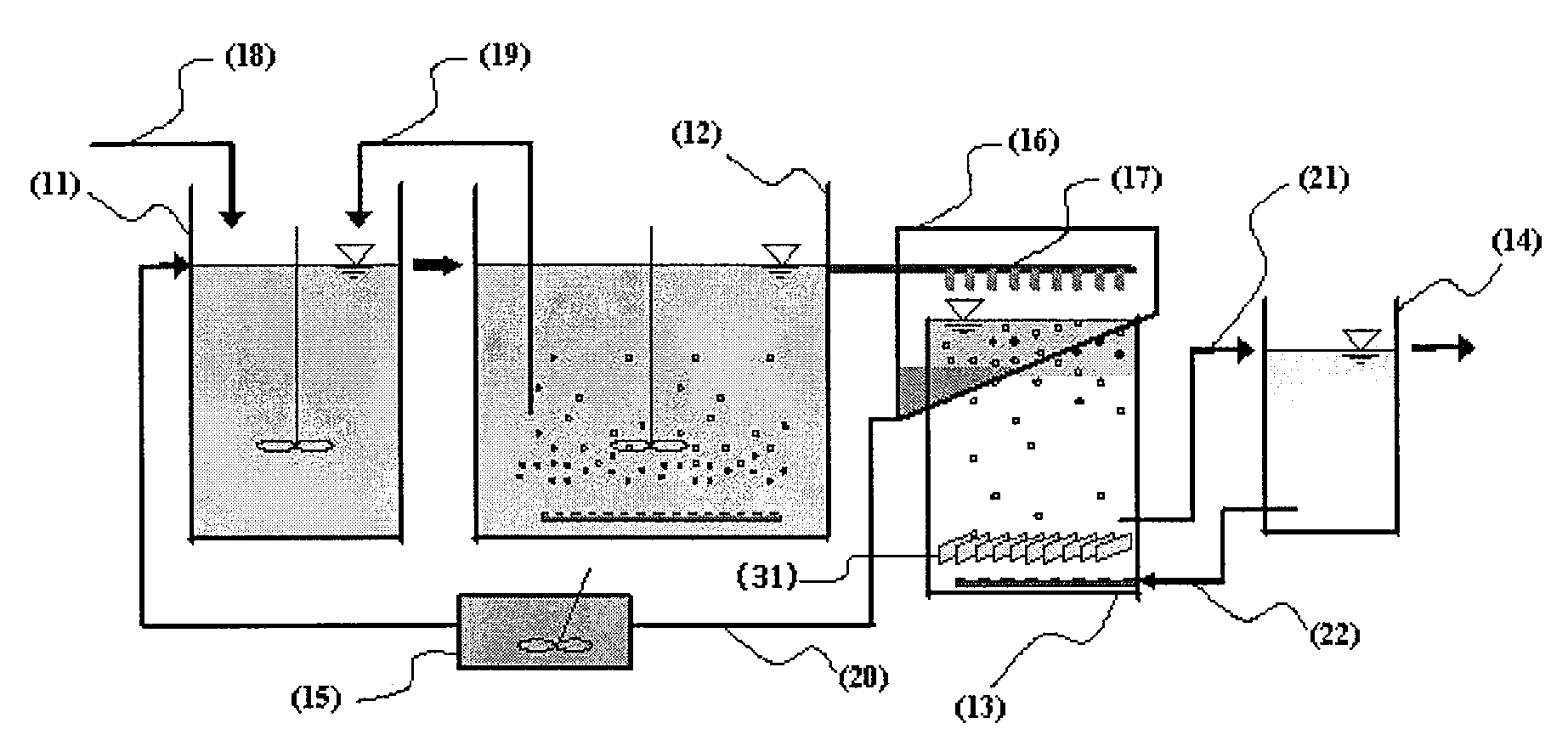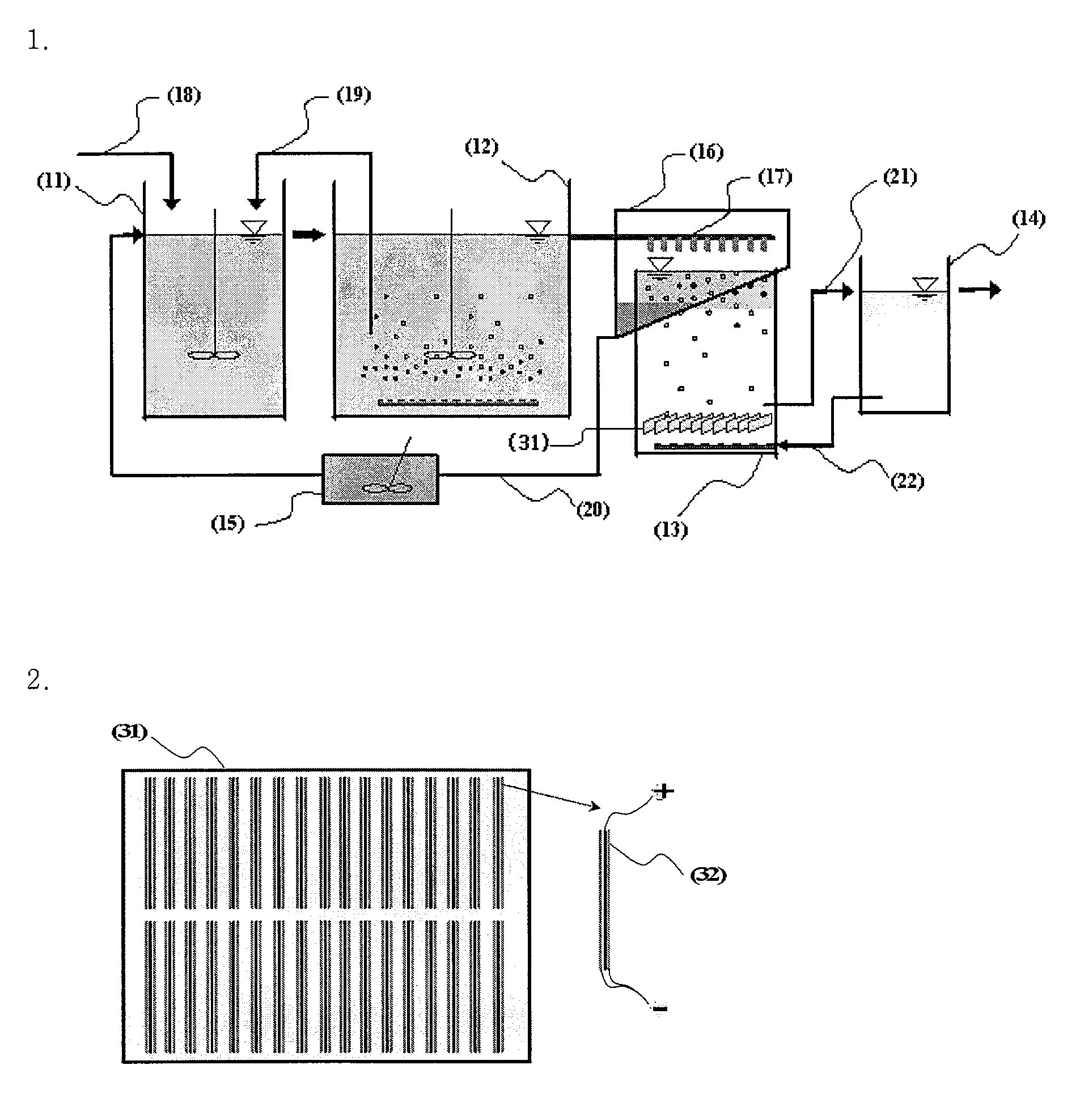Method and apparatus for wastewater treatment using nitrogen/phosphorous removal process combined with floatation separation of activated sludge
a technology of activated sludge and wastewater treatment, which is applied in the direction of multi-stage water/sewage treatment, liquid degasification, separation process, etc., can solve the problems of reducing the efficiency of solid-liquid separation, unable to regulate the concentration of activated sludge in the reactor vessel in proper or high concentration, and excessive loss of activated sludge, etc., to achieve the effect of optimizing the removal efficiency of organic substances and nitrogen and phosphorus
- Summary
- Abstract
- Description
- Claims
- Application Information
AI Technical Summary
Benefits of technology
Problems solved by technology
Method used
Image
Examples
example
[0048]In the present example, a solid-liquid floatation separation vessel according to the present invention is combined with an MLE process that is the most representative nitrogen removal process using activated sludge. First of all, discharge water (hereinafter referred to as “raw water”) from a primary clarifier and solid-liquid separation vessel (not shown) are supplied to a non-oxygen vessel (11) in MLE process via a inlet line (18) for raw water.
[0049]In the non-oxygen vessel (11), a denitrification occurs by the microorganisms using the organic substances contained in the raw water introduced as an electron donor and the organic substances are removed simultaneously. The hydraulic retention time in the non-oxygen vessel (11) is 2 to 4 hours, and a mixed solution of activated sludge microorganisms is agitated by an agitator. The raw water via the non-oxygen vessel (11) is introduced to an aeration vessel (12) in which ammonia nitrogen contained in the raw water is nitrificate...
PUM
| Property | Measurement | Unit |
|---|---|---|
| concentration | aaaaa | aaaaa |
| concentration | aaaaa | aaaaa |
| hydraulic retention time | aaaaa | aaaaa |
Abstract
Description
Claims
Application Information
 Login to View More
Login to View More - R&D
- Intellectual Property
- Life Sciences
- Materials
- Tech Scout
- Unparalleled Data Quality
- Higher Quality Content
- 60% Fewer Hallucinations
Browse by: Latest US Patents, China's latest patents, Technical Efficacy Thesaurus, Application Domain, Technology Topic, Popular Technical Reports.
© 2025 PatSnap. All rights reserved.Legal|Privacy policy|Modern Slavery Act Transparency Statement|Sitemap|About US| Contact US: help@patsnap.com


